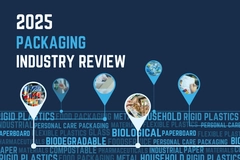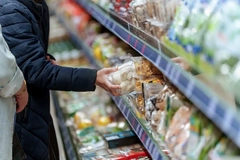US researchers shortcut “dirty processes” to transform plastic waste into detergents

04 Sep 2023 --- Researchers at University of California, Santa Barbara (UCSB), US, are repurposing plastics in a method that shortcuts conventional “dirty” processes for making surfactants while giving single-use plastics one more shot at usefulness.
In a paper published in Chem, the scientists have reimagined the value of single-use plastics with improvements to an innovative process that can turn polyolefins, the most common type of polymer in single-use packaging, into valuable alkylaromatics – molecules that underlie surfactants, the main components of detergents and other useful chemicals.
“If we make these surfactants from fossil fuels now, and you could make them from waste plastics, then you are not using fossil fuels to make surfactants anymore, and you’re getting another use out of the carbon that went into the plastics,” explains chemical engineering professor Susannah Scott, who holds UCSB’s Mellichamp chair in Sustainable Catalytic Processing.
The researchers built on previous work in which they debuted a catalytic method to break the strong carbon-carbon bonds that make plastic the difficult-to-degrade material it is, then rearrange the molecular chains into alkylaromatic rings.
While effective, Scott says the original process, based on a platinum-on-alumina catalyst, was slow, and its yield of alkylaromatic molecules was low. “What we’ve done in this paper is show how to do it better.”
 The researchers say that the plastic waste transformation method has commercialization potential.Acid and metal
The researchers say that the plastic waste transformation method has commercialization potential.Acid and metal
The researchers explain that the key to their method is increasing the acidity of the original alumina catalyst via adding chlorine or fluorine. With the added acid sites, the team was able to boost the speed and selectivity of their process.
“[Added acid] makes the alkylaromatics faster and we can tune it to make the right-size molecules,” Scott explains. In the new study, the researchers focused on finding the optimal ratio of acid sites to metal sites in their catalyst.
“It turns out they work together. They have different roles, but you need both of them to be there and in the right ratio so the catalytic cycle doesn’t get stuck at any point,” she notes.
In addition, the scientists’ one-pot process operates at moderate temperatures, requiring a low energy input. While the method originally took 24 hours to turn plastic into alkylaromatic molecules, the improved process can complete the task within a couple of hours, increasing the amount of plastic that can be converted into a reactor.
Commercialization potential
With further improvements, the method could be on its way to becoming a viable commercial process, highlights Scott.
“The ultimate goal is to bring it into wide use, enabling and incentivizing the recovery of single-use plastics. Using waste plastics as a highly abundant raw material, chemical companies could take the alkylaromatic molecules resulting from this process and transform them into the surfactants formulated into soaps, washing liquids, cleansers and other detergents.”
“Ideally, you want to reuse waste plastic for a purpose with a large enough production volume, for which there is significant demand, to make a dent in the plastic problem,” Scott explains.
She adds that to determine if this method is truly sustainable, it would have to undergo a life cycle assessment, in which the energy spent and GHG emitted are calculated at each step.
Using waste material ensures that no additional GHG emissions are produced to create the feedstock, but the energy required to run the catalytic process and separate the desired molecules would have to be factored in before scaling up, Scott says.
If it passes muster, the method could displace the more fossil fuel-intensive processes that go into creating surfactants from scratch.
“We will need multiple targets to deal with the waste plastic problem, but this is a fairly big one,” Scott concludes. “This is worth doing.”
By Natalie Schwertheim











